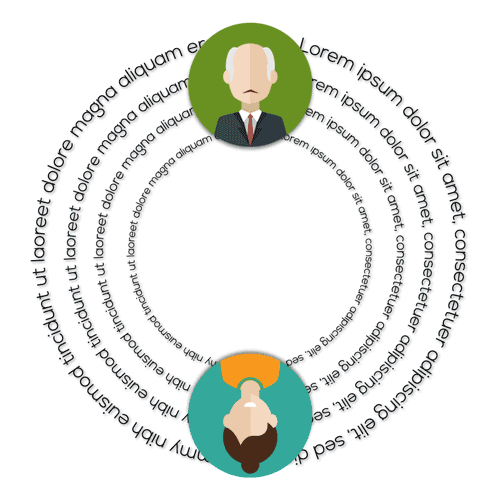Chapter 27: Considering Your Subjectivity
The analytical writing process is often challenging for students because there is not a single, correct answer. Analysis does not always lead to a definitive answer; instead, your goal is to consider your own ideas and develop your impressions of a topic. The textbook A Guide to Perspective Analysis suggests spending time thinking about your point of view on a topic, whether you’re writing about a text or image, is a critical step because your perception is influenced by connections you have already developed to the topic, your values, and your experiences. Here is a sample that will help you focus on the analytical writing process.

When we write an analysis of a subject, we should see ourselves as participating in a discussion, one that will continue long after we’ve handed in our essays. Just as it’s unlikely that what we have to say will be the last word, we should not allow others to have the final say either. Of course, there isn’t just one conversation that goes on in our lives; instead, we are involved every day in several discussions, and they all influence each other. Because we do not begin any analysis as a blank slate, we first need to understand why we see a subject in a certain way, by considering how past discussions and experiences inform our reactions.
None of us are raised in a vacuum: our friends, our teachers, and our families influence our beliefs, tastes, and judgments. Though sometimes we may disagree with their perspectives (especially those of our parents), we can never completely escape from them. Likewise, our broader culture exerts a heavy influence. For instance, although you might enjoy shows like South Park or Family Guy that satirize the American family, you might not have liked them if you were alive (and able to see them) in the 1950s when Americans were more celebratory and less critical of themselves. In addition, personal experiences strongly inform our reactions. At some time, we have all heard a sappy song about a heartbroken person and wanted to scream at the singer to get over it, only to hear the same song again after being freshly dumped and feeling as though it now penetrates our soul.
This subjectivity holds true not only for works of art and fiction but also for writing that reveals the author’s intentions more directly, such as editorials, documentaries, and essays. For one, we may disagree as to whether the author’s stated purpose is the only reason behind the piece.
If, for instance, an instructor or fellow student were to write an editorial arguing that the government should spend more money on education to make it more accessible to the poor and bring about greater cultural literacy, I know what my friends and family would say: “Yeah, right; you just want a raise.” And even if everyone were to agree that the author has sincerely stated the purpose of the piece, the effect of that purpose will vary from person to person due to the different experiences, morals, and beliefs that shape each individual’s unique perspective. For instance, a Michael Moore documentary that is critical of American business practices may leave one person (who just received a promotion) seething at him for trying to tear down established institutions, while another viewer (who just got downsized) may applaud Moore for bravely calling our attention to an injustice that needs to be rectified.
We can all agree that it is impossible to wipe our minds of all potential bias. Objectivity is an ideal that is largely unattainable, for we all see the world through our own subjective lenses. This example of an individual reader response is why we need to first acknowledge, understand, and evaluate our subjectivity, especially as it relates to the subject of our analysis.
To consider why you react to something as you do, consider recording your thoughts in a reading/observation journal when reading a text, viewing a show, listening to a song, or recalling an experience. Taking the time to pause periodically and record your thoughts will help you identify and understand your own perceptions and biases.

Your responses will vary in length and type, but should essentially consist of two parts: first summarize what you encounter (if it’s a written or visual text, mark the page number or DVD chapter so you can find it again), and then write your reaction to it. The advantage to keeping a reading/observation journal is that it allows you to reflect on your subject as you examine it. Though you might think pausing to write in a journal will take away from experiencing or enjoying your subject, it may actually help you to encounter it more fully.
Adapted from “Chapter 2” of A Guide to Perspective Analysis, 2012, used according to Creative Commons CC BY-SA 3.0 US

